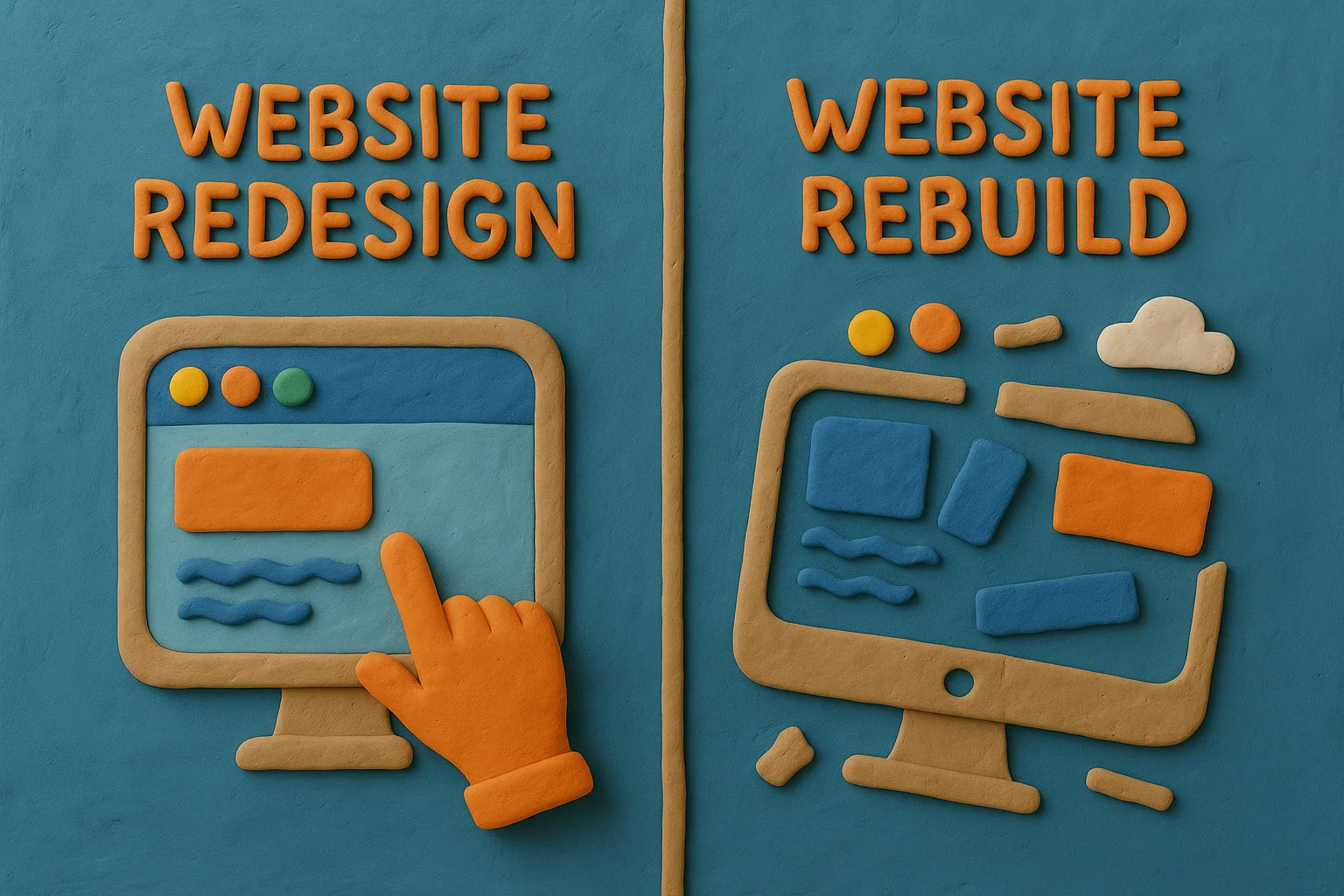Your website isn’t static—it should evolve alongside your business, your customers, and your market. But when your site feels outdated, underperforms, or no longer reflects your brand, the big question is: What does your website need—redesign vs. rebuild?
The answer depends on your goals, your current platform, and how deep the issues run. Let’s break down the difference—and how to know which path is right for your business.
What Is a Website Redesign?
A website redesign focuses primarily on updating the look, feel, and user experience of your site—without tearing it down entirely.
Think of it like renovating a house. You keep the structure, but swap outdated design elements, improve navigation, update content, and optimize for conversions. Under the surface, much of the existing code, structure, or platform remains.
Common reasons for a website redesign:
Your site looks outdated or off-brand
You want to improve the user experience or mobile performance
Conversion rates are low despite good traffic
Your messaging has evolved, but your site hasn’t
You need visual updates but the core functionality works
A redesign is often faster and more cost-effective than a rebuild—ideal when your foundation is solid but your digital presence needs a refresh.
What Is a Website Rebuild?
A rebuild means starting from scratch—new structure, new platform, new code. It’s a more extensive project but offers greater long-term flexibility and scalability.
A rebuild might sound daunting, but in many cases, it’s the smarter investment—especially if your current site is holding you back.
Signs you may need a full rebuild:
Your site is built on outdated, limiting technology
Core functionality is broken or difficult to update
You’ve outgrown your platform or need advanced integrations
SEO performance is suffering due to technical flaws
You want to future-proof your site with modern capabilities
In other words, if your website’s foundation is unstable, a fresh rebuild avoids the cost of constant patches and limitations down the road.
Redesign vs. Rebuild: How to Decide
Start by assessing your site’s performance, technology, and business goals:
Performance: Are visitors converting? Is the site fast, secure, and mobile-friendly?
Technology: Is your platform outdated or restricting growth?
Scalability: Will your current structure support your future needs?
Visuals & Messaging: Does the site reflect your brand and speak to your audience?
If your site is underperforming due to poor design or messaging—but the foundation works—a redesign can give it new life.
But if your site is outdated at its core, difficult to manage, or limiting your growth, a rebuild is often the smarter long-term solution.
Final Thoughts
Redesign vs. rebuild—both aim to improve your digital presence, but they serve different needs. The key is understanding your current website’s limitations and your business goals.
Cutting corners on the wrong project can waste time and money. Investing in the right solution ensures your website isn’t just functional—it becomes your most valuable marketing tool.
